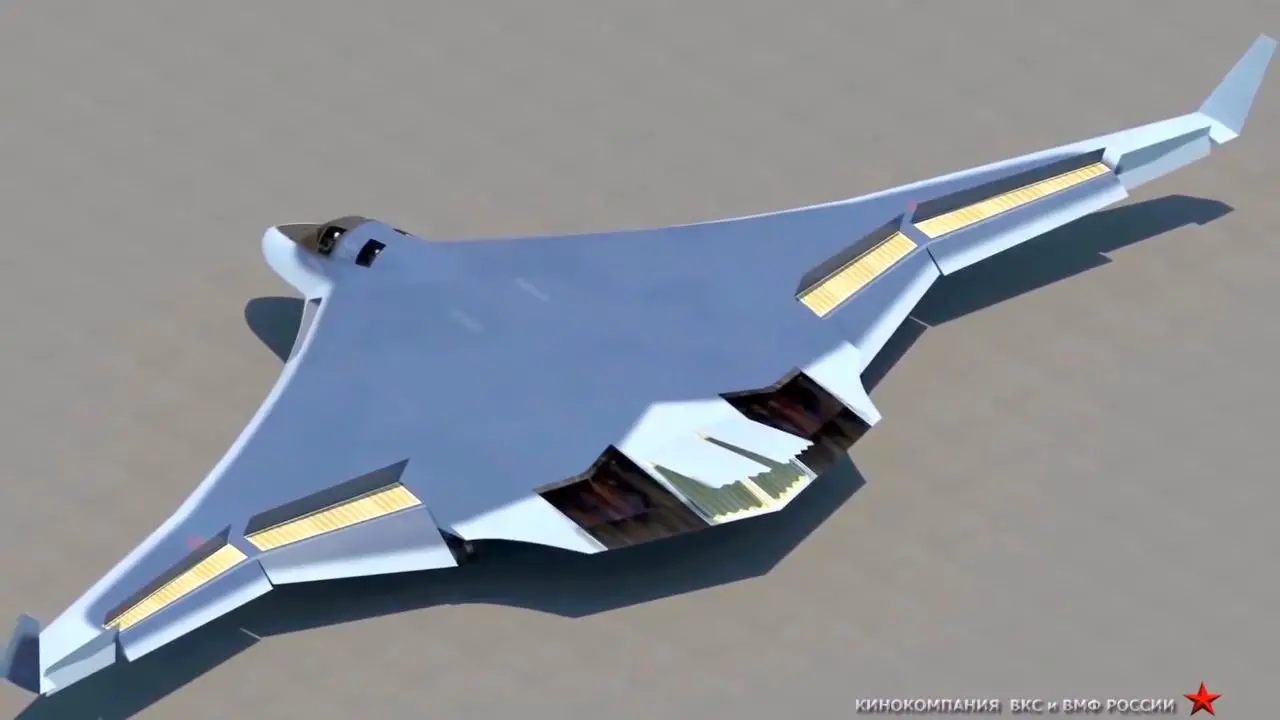The PAK-DA, also referred to as “Product 80” or “Poslannik,” is in the final phases of development in Russia’s fifth-generation strategic bomber program. The objective of this ambitious project is to replace the aging Tu-95, Tu-22M3, and Tu-160 bombers that are presently in service, thereby achieving a generational leap in Russian long-range aviation. James Heappey and other British defense officials have acknowledged significant progress in the program. The prototype is reportedly nearing completion, and its inaugural flight is expected to take place in late 2025.
The PAK-DA’s development has been influenced by Russia’s desire to modernize its strategic bomber fleet and maintain parity with Western powers, particularly in light of the United States’ advances in its own B-21 Raider stealth bomber. In contrast to previous Russian bombers, the PAK-DA is engineered with stealth as its main feature, using a flying wing configuration that is reminiscent of the American B-2 Spirit design. This design significantly reduces the radar cross-section, enabling the aircraft to enter densely defended airspace with a reduced risk of detection or interception.
The PAK-DA is a subsonic bomber that is powered by two engines that were developed by JSC Kuznetsov. Each engine is capable of producing up to 24 tons of thrust. The aircraft is estimated to have a maximum takeoff weight of 145 tons and a payload capacity of 30 to 35 tons, which is significantly more than the B-2’s 20-ton payload. The operational range of the aircraft is expected to be between 12,000 and 15,000 kilometers, and it can remain airborne for up to 30 hours, allowing for global strike missions without the need for refueling. The crew complement will consist of four individuals, and the service ceiling is anticipated to exceed 20,000 meters. The mission will be facilitated by a high degree of automation, which will reduce the burden and improve mission efficiency.
The versatile and formidable armament of the PAK-DA is a defining feature. At least 12 Kh-BD cruise missiles, Kh-101, Kh-55, the hypersonic Kh-47 “Kinzhal,” and the future Kh-95 are believed to be carried by the bomber, which is expected to be a combination of conventional and nuclear weapons. Russian sources emphasize the expected advantage of the PAK-DA over its US counterparts in terms of armament, particularly its early integration of hypersonic missiles, which are still under development in the United States. Air-to-air missiles, anti-satellite weapons, anti-ship missiles, precision-guided explosives, and special aerial bombs developed by Russia’s VNIIEF are also anticipated to be supported by the aircraft. Its modular weapon bays are intended for future enhancements, which could include unmanned operational modes and directed-energy weapons.
Advanced electronic warfare systems further enhance the PAK-DA’s stealth by allowing it to jam adversary radars and communications, thereby increasing its survivability in high-intensity combat environments. The bomber’s avionics array will provide improved targeting and guidance capabilities, enabling the precise delivery of munitions to specifically designated targets. The PAK-DA’s effectiveness in modern aerial combat and strategic deterrence duties is guaranteed by these features, in conjunction with its low radar signature.
Although these specifications are valuable, the PAK-DA program has encountered substantial delays and obstacles. The timelines have been delayed as a result of resource diversion due to the Ukraine conflict, issues with engine development, and Western sanctions. The first flight, which was originally scheduled for 2023–2024, is now expected to take place in late 2025, with serial production not anticipated until 2027. The production lines have been converted to produce more Tupolev commercial aircraft. These delays have prompted concerns regarding Russia’s capacity to deploy the bomber in sizable quantities, particularly in light of the progress of competing programs in the United States and China.
Nevertheless, Russia is reportedly in the process of upgrading its extant Tu-160 fleet as a temporary measure, and several prototypes are currently in production. The PAK-DA’s operational deployment and completion would be a significant milestone for the Russian Aerospace Forces and could potentially disrupt the global strategic equilibrium, provided that the program successfully surmounts its remaining technical and financial obstacles.
To sum up, the PAK-DA “Product 80” is on the brink of becoming a fundamental component of Russia’s future strategic deterrent. The bomber is planned to be equipped with advanced weaponry, including hypersonic missiles, a hefty payload, long range, and stealth, which are intended to guarantee Russia’s capacity to execute global strike missions and preserve strategic parity with other great powers. The PAK-DA remains one of the most closely observed military aviation projects in the world today, despite the numerous obstacles it has faced on the path to operational readiness.
Official Website of Youtube Channel – Altitude Addicts
